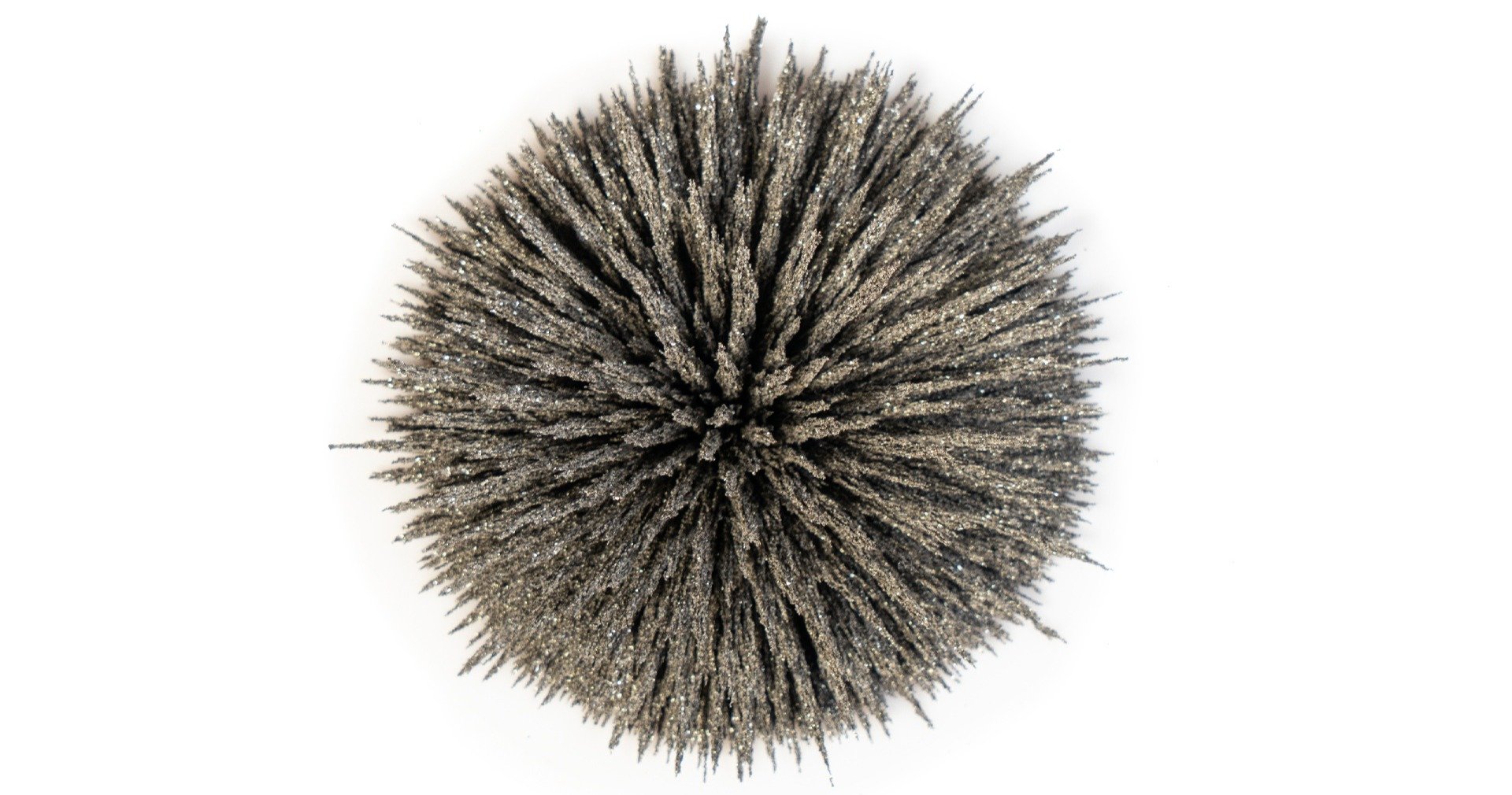There are three elemental metals that are magnetic:
Iron
Cobalt
Nickel
Compounds and alloys can also be magnetic if they contain iron, cobalt, or nickel. Common magnetic alloys include:
Many types of steel
Many types of stainless steel
Ferrite
Alnico
Permalloy
A magnetic metal, when magnetized, produces a magnetic field. Metals that can be magnetized are described as “ferromagnetic.” In their natural state, these metals are usually not magnetic themselves but will be attracted to objects which produce magnetic fields. When they are magnetized, they become magnets themselves.
When working with any metal, it is important to know if it is ferromagnetic. Sometimes the ferromagnetic properties of an alloy such as steel are incredibly useful for attracting or repelling other materials. But if you want to avoid exerting unnecessary magnetic forces on your materials, you may want to avoid ferromagnetic metals in your project.
WHAT MAKES A METAL MAGNETIC?
A piece of metal will be magnetic if the crystalline structure of its atoms is arranged so that they are all pointing in the same direction. The atoms in the majority of materials are not arranged in any particular arrangement.
Only ferromagnetic substances can get magnetized. The atoms of ferromagnetic metals are typically not aligned in their natural state and require magnetization. One of three types of magnets are produced when you magnetize a metal:
Permanent Magnets
Temporary Magnets
Electromagnets
A metal with a permanently realigned crystalline structure is a permanent magnet. A metal that only produces a magnetic field under specific circumstances is called a transient magnet.
By winding a wire around a ferromagnetic material and passing an electrical current through it, an electromagnet is produced. This particular magnet only generates a magnetic field while the electricity is on. Additionally, there is reciprocity in this relationship. It is possible to produce an electrical current by passing a magnet through a coil of wire.
Many common metals, including lead, titanium, tungsten, gold, silver, copper, brass, and aluminum, are not ferromagnetic. They are not magnetizable and are not drawn to magnetic fields.
ARE MAGNETIC METALS STRONGER THAN NON-MAGNETIC METALS?
There is no connection between a metal’s strength or weakness and its magnetic characteristics. Steel is one of the more durable ferromagnetic metals. As an alternative, some powerful metals like titanium are not magnetic.
Additionally, there is a whole class of magnets referred to as “soft” magnets. These are frequently created from annealed steel or iron, which merely denotes that they have undergone physical or chemical modification to lessen their hardness. Lead, gold, and tin are only a few of the softest metals we are aware of; they are not all ferromagnetic.
CAN METAL DETECTORS DETECT NON-MAGNETIC METALS?
Gold, silver, copper, and tin are among the non-magnetic metals that metal detectors may find. Only ferromagnetic substances, such as iron, cobalt, and nickel, are strongly enough drawn to magnetic fields to be classified as magnetic. All metals can be classified into one of three groups, though:
Ferromagnetic
Paramagnetic
Diamagnetic
Metal detectors can be used to find paramagnetic and diamagnetic metals because of their very weak interactions with magnetic fields, which are invisible to the naked eye.
EXAMPLES OF WAYS TO UTILIZE MAGNETIC METALS
Magnetic metals have countless possible uses. These incredibly adaptable materials are present in practically every aspect of our daily lives.
One can utilize magnets for:
Attaching items transiently to other ferromagnetic materials
Establishing a compass
constructing microphones and speakers
recording information, music, or video on magnetic tapes or other devices, such as hard drives, for storage
Toys
electric guitar pickups
On credit, debit, and other banking cards, magnetic strips are used.
electric engines
Transporting heavy scrap metal, such as vehicles,
Trains that use “magnetic levitation” or “mag-lev”
production of electricity
MRIs, or magnetic resonance imaging
The possibilities are practically unlimited when you take into account the fact that magnets may attract or repel one another depending on their orientation and that a magnet can generate electricity when used in combination with a conductive wire.
HOW DOES MAGNETIZATION AFFECT PRICING?
There is no additional cost associated with the price of ferromagnetic metals because their features are a result of their atomic and chemical composition. Because of its inherent properties, a sheet of ferromagnetic stainless steel will always be ferromagnetic.
But if you’re looking for a permanent magnet, the price will probably change. These materials frequently cost more than their non-magnetized equivalents because permanently magnetizing a piece of metal requires more processing and effort.
LAKSHYA INTERNATIONAL CAN HELP
If you find yourself in need of magnetic metal for any type of project, Lakshya International is here for you. Our niche is high quality, low volume, specialty metals, and we want to work with you! Get started on your project by requesting a quick quote today.
Read More :
What Makes Stainless Steel Non-Magnetic?: Find out why stainless steel is not magnetic and look into the science behind this. Find out how mixing iron, chromium, nickel, and other elements make an alloy with low magnetic permeability, and how adding carbon further reduces any magnetism that is still there
Can Sheet Metal Be Made Any Thinner? : Metal thickness is a crucial factor in any production process. It is crucial to almost all metal forming processes, including welding, fabrication, and finishing. The primary factor influencing any metal’s thickness is its intended function.

